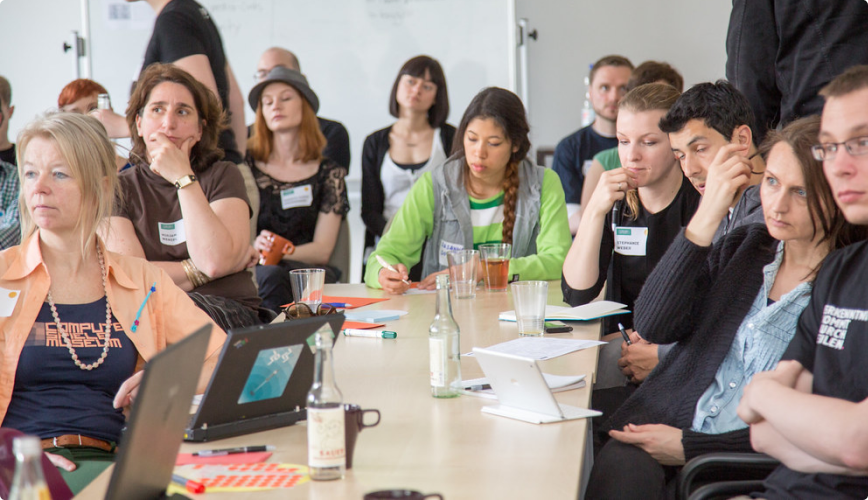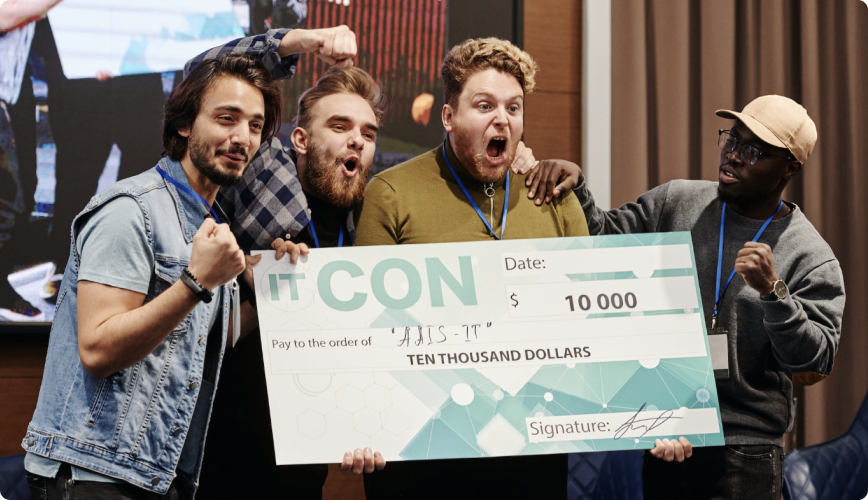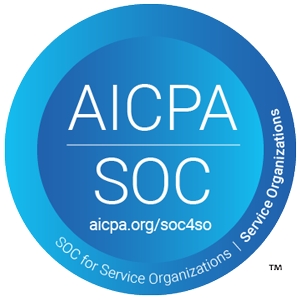
What are the Stages of a Hackathon?
What are the Stages of a Hackathon?

A Roadmap for Your Event’s Success
A hackathon typically takes several months of planning and several days or weeks after the event to bring it to a close. The Brightidea Professional Services Team has found that it’s helpful to break the process into distinct stages with key activities and goals. Here are the stages we adhere to when planning a hackathon event.
Planning Stage
The planning stage is led by the sponsoring department and the extended team. Key activities in this stage include: setting goals, identifying relevant stakeholders, developing a project plan, creating a communications plan, defining the evaluation criteria, and website configuration.
Step one: Set goals
What do you want to achieve with the hackathon? Do you want to focus on a specific technology or a particular problem or challenge? Clearly defining the goals and objectives will help you focus your efforts and make sure that everyone is on the same page. If you don’t frame the hackathon correctly, it’s unlikely that you’ll yield the results you’re looking for. These same goals should be reflected on the hackathon judging scorecard.
Adhering to the SMART method will help ensure the goals you set are attainable and worth pursuing. SMART goals are specific, measurable, actionable, relevant, and timebound. By adhering to this criteria you’ll be able to focus your efforts and increase the odds of achieving meaningful goals.
Step two: Identify stakeholders
Stakeholders are individuals or groups who have a vested interest in the success of the event.
Assessing the roles to be filled allows for intentional and thoughtful stakeholder selection, along with purposeful communication during recruitment. Cross functional partners will make up your extended team and provide a range of functions, such as providing resources, lending their authority in communications, forging connections across the organization, providing communication assets, and reviewing and approving communications. It’s common to include HR, Legal, Marketing, Product Development, IT, Engineering, and senior leadership.
Step three: Develop a project plan
Develop a project plan at the start by identifying key milestones, activities, and tasks and assign roles/responsibilities to team members. While the event itself may only be one to three days, the planning and development can begin up to six months in advance. It might be useful to start from the end date and work backward.
Get buy-in from key executives to participate as a judge or sponsor for the event as well as key touch points along the way to provide inputs and approvals. Time is hard to schedule so jump on it early.
Step four: Create a communications plan
Assign a point person
Appoint one person on your team as owner for all hackathon-related communications. This person will be responsible for developing and driving delivery of your communication strategy and fostering partnerships with the extended team that’s responsible for planning and executing the hackathon.
Develop your topic
It may be helpful to kick off your topic development by referencing past projects or innovation efforts for inspiration. Make sure the topic aligns to existing innovation priorities and the enterprise strategy. You can invite your employees to brainstorm with you. As you begin to develop your topic make sure to have a specific problem and clear goals in mind. For example, how can a customer’s life be changed? How could your service be delivered more effectively? Keep in mind your timeline to launch the innovation to market.
Consider your channels
Frequently used communication channels (e.g., intranet, newsletter, Slack, Teams, email, etc.) will serve as a vital part of your communications plan for delivering teasers, leadership messages, the launch announcement, reminders, and updates. If you’re using Brightidea Hackathon, emails will be auto-generated when triggered by predetermined actions, such as submission confirmations, comment notifications, status updates, team building requests, and action item assignments.
Step five: Define your evaluation process
Clarifying your evaluation criteria early in the process can help ensure the objectives of the hackathon are clear to all participants and provide a framework for evaluating the results of the event. Having clear criteria can also help to ensure that all teams are working towards the same goal and that the judging process is fair and unbiased. Additionally, it can help to ensure that the most innovative and impactful ideas are identified and recognized.
Ask yourself, what types of ideas are you looking for? What characteristics would make an idea stand out? Make sure that your event is well aligned to your (and other sponsors’) objectives. You’ll also want to make sure the ideas and solutions offered are customer centric, and demonstrate impressive technical capability. Once you’ve defined the evaluation criteria, connect your hackathon scorecard evaluation questions to the key criteria to easily review and rate ideas.
Step six: Craft your hackathon website
Once you have your topic and the evaluation criteria defined, you can start crafting the content for your website. Your hackathon website will be the source of truth about the hackathon and provide easy-to-obtain key details including:
- Highlight the opportunity, ways to get involved, logistics & details, incentives, and criteria on the hackathon judging scorecard
- Introduce and spotlighting leaders judging the hackathon presentations
- Demonstrate executive or senior leadership support and reinforce the call to action
- Schedule: Outline key dates and activities throughout the hackathon
- Additional details: Includes information such as location, top FAQs, updates, and instructions on how to contact the hackathon team
Pre-Launch Stage
The pre-launch stage is driven by the sponsoring department and extended team. Key activities in this stage include: sending the event announcement, providing ongoing communications to relevant parties, performing due diligence, and setting expectations for final presentations.

Step one: Announce the event and maintain communications
This is the time to onboard participants and maintain their engagement up until the day of the event. Decide which channels will be most effective — consider your existing channels as well as new avenues (social media, media outlets, etc). You’ll use a combination of your organization’s approved channels and communications generated by the Brightidea platform. Most of your content will be published using email, company intranet, and internal messaging apps and will be supplemented by the functionality that Brightidea offers.
Types of messages you should plan for include: teaser(s), leadership messages, the launch announcement, as well as reminders, updates, and spotlights throughout the various stages of the hackathon.
Step two: Perform due diligence
Ensure participant eligibility
Review team selection with HR and confirm that applicants are eligible to participate. Typically, individuals with written warnings or those on performance plans are ineligible, but this is at your organization’s discretion.
Check with managers to ensure teams are available to participate. Best practice is to confirm this well in advance of the event to provide ample notice if staffing coverage needs to be arranged or modified.
Protect your company
The legal team should have been included at the outset in the planning phase. They can provide waivers, NDAs, and any other agreements necessary to protect the interests of your company. They will likely have input on the right way to allocate prizes (perhaps highlighting the tax implications of cash prizes), protect the IP, clarify who owns the output from the hackathon, etc. Factor their involvement into the creation of your timeline, as they’ll need plenty of time to draft documentation and review your plans thoroughly to safeguard against risks. Get participants to sign and return these documents well in advance of the hackathon event.
It’s smart to draft and distribute a hackathon code of conduct that each applicant must sign in order to participate. The code of conduct is intended to create a pleasant, safe, and non-discriminatory event for a diverse set of participants. Having a well-defined set of rules helps in case of any issues cropping up during the event.
Find backups
If you have a finite number of teams you’re inviting to the hackathon, be prepared with backups should one or more teams become unavailable. You’ll want to perform the same diligence with judges, confirming their availability and identifying backup judges if needed. Make sure to provide calendar blocks to both participants and judges.
Send reminders
Review the dates, agenda, what to bring, and expectations for both participants and judges. Send a reminder to all parties via your preferred communication channel.
Confirm reservations
Reconfirm the event space reservation if the event is in-person and not hosted at your company.
Step three: Set expectations for final presentations
Set clear expectations and provide guardrails as needed to ensure your participants are prepared for their final presentations.
Key considerations include:
- Time limit for presentations
- Q&A expectations
- Approved methods of delivery (PowerPoint, video, prototype demo, skit, etc.)
- Will a template (such as pitch deck or business model canvas) be provided?
Hosting Stage
This stage requires the participation of the attending hackers, finalists, judges, and the sponsoring department. This is the stage in which you run the hackathon, document the event, and select finalists.

Step one: Manage the event logistics
You might find it handy to have a checklist for the day of the event. Here’s a few things you’ll want to check:
- Ensure room layout is set, food is ordered, Wi-fi is working, hardware is provided, and audio/video/camera equipment is available (or delivered/set up)
- Publish the detailed day-of event schedule
- Relay the presentation order and how to submit files/assets
Step two: Document the event
Take photos and videos of the event in action and share on social media, the hackathon site, and your enterprise website. You may want to interview participants and judges about their experiences, such as what’s been the most memorable aspect of the hackathon or what they are most proud of. After you announce the winning team(s) capture the moment with team pictures and the award hand-off.
Step three: Select finalists
Inform team they have been selected for the finals and ensure all members will be in attendance, either in-person or virtually. This step may be done at the end of hosting the event, or post event in the closing stage.
There are two ways projects can be evaluated, via submissions that require an evaluation, or via a race to accomplish something, such as breaking into a website. The race scenario is awarded the day of, whereas the project submission is based on merit and fully evaluated by the judges after the event. This evaluation is documented on the hackathon scorecard, a.k.a., evaluation sheet.
Closing Stage
This stage requires the participation of finalists, judges, and the sponsoring department. This is the stage in which you award the winner(s), update the site and inform all relevant stakeholders of next steps, such as any implementation plans with the winning idea or solution, and conduct an event retrospective in order to refine your process for the next hackathon.

Step one: Award winners
The promise of awards and recognition will be a big motivator to participate, and you may decide to give all participants something small to show gratitude for their contribution. If the prizes aren’t available on the day of the hackathon, provide the teams with clear instructions on how to collect them later. Don’t forget to capture the moment with team pictures at the award hand-off.
Prizes could include:
- Cash
- Gift certificates
- Tech gear (tablets, smart watches, drones, Amazon echo, portable harddrives, laptops, etc.)
- Extra PTO days
Step two: Close the event
After the event is over you may want to celebrate with the event participants and stakeholders for a job well done. This is another opportunity to take videos and photos to share on your social as well as internal communication channels. Send a final thank you to all who participated, including your project teams, stakeholders, and judges, and inform everyone of the plans for the winning idea — will it be funded? Will it be subject to further testing and validation? Participants will want to know that their time was well spent and that their efforts weren’t in vain. Finally, update the Hackathon homepage with the results and photos of the event.
Step three: Conduct an event retrospective
This is an opportunity to reflect on and discuss the overall hackathon experience, addressing learnings, lessons, and strengths to ensure you can continuously improve for the next hackathon.
Step four: Showcase implementation
If the idea is proven to be viable, implementation will likely occur months, or even a full calendar year, later, depending on the cost and complexity of the initiative. Document the progress along the way with photos and interviews of the team responsible for execution. This could be used as content for both your company’s internal newsletter as well as your customer facing blog and social channels. Obviously, you’ll want to withhold disclosing any confidential information pre launch, but there will most likely be something to share at a general level.
Finally, after the new product, service, or feature release, document the business value gained from the hackathon, as well as any boost in employee morale and job satisfaction.

